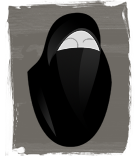 Interesting story recently from Mexico about women being used exclusively as traffic cops. The reason? To fight corruption in the police force, a chronic problem in Mexico. The assumption is that women are less likely to take bribes to forgo issuing traffic citations or to strong-arm motorists into forking over cash instead of being arrested. Ecatepec Police Chief Carlos Ortega Carpinteyro, cited in a story on NPR, says women are much better suited for traffic duty: “When a man is approached by a female cop, even though he is the stronger sex, he calms down and will listen to her…women are more trustworthy and take their oath of office more seriously. They don’t ask for or take bribes.” So far the women traffic cops in the Mexico State don’t have full police authority – they can only issue warnings.
Interesting story recently from Mexico about women being used exclusively as traffic cops. The reason? To fight corruption in the police force, a chronic problem in Mexico. The assumption is that women are less likely to take bribes to forgo issuing traffic citations or to strong-arm motorists into forking over cash instead of being arrested. Ecatepec Police Chief Carlos Ortega Carpinteyro, cited in a story on NPR, says women are much better suited for traffic duty: “When a man is approached by a female cop, even though he is the stronger sex, he calms down and will listen to her…women are more trustworthy and take their oath of office more seriously. They don’t ask for or take bribes.” So far the women traffic cops in the Mexico State don’t have full police authority – they can only issue warnings.
Are women really less corruptible. Tania Lombrozo points out in her blog that the results are mixed. In a recent study from Rice University, researchers found that corruptibility of men versus women depends on the kind of government in place: “We find strong evidence that a gender gap in corruption attitudes and behaviors is present in democracies, but weaker or non-existent in autocracies.” According to the article, this correlates as well with the role of women in politics – in democratic countries having a larger number of women participating in government lessens corruption, but not in autocratic regimes. They provide an interesting explanation of why women are different from men in terms of corruptibility:
Women are more powerfully subject to social norms because systematic discrimination against them makes their position more tenuous. Insomuch that sex discrimination means holding women to a different (higher) standard than men for the same reward, it is riskier for them to flout the formal and informal rules of political culture because transgressions are more likely to invite retaliation. Thus, if a political culture discourages corruption, women will avoid corrupt activities more and profess greater aversion to it (compared to men) because they anticipate suffering more severe consequences than their male counterparts.
Whether the new approach will work for Mexico remains to be seen. Mexico ranks high in the corruption index of Transparency International (105 out of 174 most corrupt). It’s interesting to note that the countries that are listed as the least corrupt are also among those that in the recent World Happiness Report rank as the “happiest”, namely the Scandinavian countries, the Netherlands, Switzerland and Canada.

